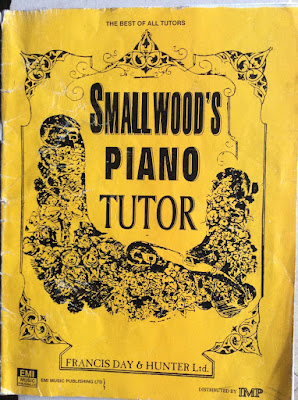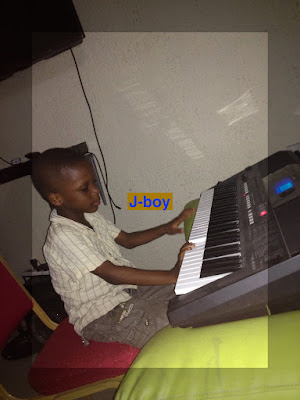I will show you how to play by ear. This means that you could listen to a song and then play it on the keyboard without having to read the sheet music.
One thing about playing by ear is that two different pianists may play the same song in different ways but to the listener, it appears like the original song. Another thinks you need to know is that just like other principles of piano learning, it takes some time and effort to be able to become good in playing by ear. But trust me, the effort is worth it!
One thing I normally do when some of my friends are around is to tell them to play a song, and then I could play along on the piano. Later, I could then play while they sing along. This can be real fun!
The following 6 steps would help you become an excellent ear-player!
1. Listen to Songs Frequently
Just as the fingers are trained over time, the ear can also be trained over time. So to improve in playing by ear, you need to make it a habit to listen to melodious songs from time to time, everyday if possible. No rap!!! no no, not rap, because if you listen to rap or reggae for a 100 years, you will make no progress. Look for songs that have piano tunes especially pop and blues.
For me, I had a little Sony Walkman and an earphone I have on almost everyday.
2. Figure out the Key to Use
By now you already know that all songs played on a piano is played in a particular key. So if you must play it try to listen to the initial part of the song, then press some of the keys in order to find out which key corresponds to the first note of the song. This may sound challenging but it is really easy. For example, the popular kids song, 'Mary have a Little Lamb' begins with the G note. That means that the song is played in the F key. 'Silent Night' begins with the C note, meaning it is played in the C key and so on.
3. Try to Play the Song in the C Key
Remember that notes of the C key is made up of only the white keys of the keyboard and probably the easiest to play. The more the black keys in the Key of song, the more the difficulty level. The interesting thing is, no matter how hard a song is, it can still be played in the key of C! So what you can do as an excercise is to listen to a song, and then turn it off and play it with key of C, that is all white keys. Repeat this for number of other songs and at the end you will notice that you have made much progress.
4. Find a Matching Chord that Could Harmonize the Melody
After you have completed the previous steps, the next thing to do is to find a chord that you can use to complement the song you want to play. We have discussed Apergios and Chords in a previous lesson. A chord is a group of three notes played either together or in alternation(apergio). For example, the chord that could harmonize with songs of the C key is either the C chord(C E G), the F chord (F A C) or the G chord (G B D).
If you have found a chord, take a some time to play it a number of times to make sure you are used to it before you could combine it with the melody.
5. Try to Play Same Thing on Both Hands
You may not sound the exact same note simultaneously on both hands, but you could do the same sets of note on your left hand as on your right hand. It would also produce a very good effect.
6. Play, Play and Play
This is about the most important because playing by ear is learnt more with time than with skills. So take your time to listen and then play every time you have the opportunity.
Final Notes
I could tell you by my own experience that success awaits you if you follow these steps I mentioned here. In about a few months, you could be happy to entertain your friends with their favorite songs!
You can leave a comment to let me know how this help you or maybe I could help you in some way.
One thing about playing by ear is that two different pianists may play the same song in different ways but to the listener, it appears like the original song. Another thinks you need to know is that just like other principles of piano learning, it takes some time and effort to be able to become good in playing by ear. But trust me, the effort is worth it!
One thing I normally do when some of my friends are around is to tell them to play a song, and then I could play along on the piano. Later, I could then play while they sing along. This can be real fun!
The following 6 steps would help you become an excellent ear-player!
1. Listen to Songs Frequently
Just as the fingers are trained over time, the ear can also be trained over time. So to improve in playing by ear, you need to make it a habit to listen to melodious songs from time to time, everyday if possible. No rap!!! no no, not rap, because if you listen to rap or reggae for a 100 years, you will make no progress. Look for songs that have piano tunes especially pop and blues.
For me, I had a little Sony Walkman and an earphone I have on almost everyday.
2. Figure out the Key to Use
By now you already know that all songs played on a piano is played in a particular key. So if you must play it try to listen to the initial part of the song, then press some of the keys in order to find out which key corresponds to the first note of the song. This may sound challenging but it is really easy. For example, the popular kids song, 'Mary have a Little Lamb' begins with the G note. That means that the song is played in the F key. 'Silent Night' begins with the C note, meaning it is played in the C key and so on.
3. Try to Play the Song in the C Key
Remember that notes of the C key is made up of only the white keys of the keyboard and probably the easiest to play. The more the black keys in the Key of song, the more the difficulty level. The interesting thing is, no matter how hard a song is, it can still be played in the key of C! So what you can do as an excercise is to listen to a song, and then turn it off and play it with key of C, that is all white keys. Repeat this for number of other songs and at the end you will notice that you have made much progress.
4. Find a Matching Chord that Could Harmonize the Melody
After you have completed the previous steps, the next thing to do is to find a chord that you can use to complement the song you want to play. We have discussed Apergios and Chords in a previous lesson. A chord is a group of three notes played either together or in alternation(apergio). For example, the chord that could harmonize with songs of the C key is either the C chord(C E G), the F chord (F A C) or the G chord (G B D).
If you have found a chord, take a some time to play it a number of times to make sure you are used to it before you could combine it with the melody.
5. Try to Play Same Thing on Both Hands
You may not sound the exact same note simultaneously on both hands, but you could do the same sets of note on your left hand as on your right hand. It would also produce a very good effect.
6. Play, Play and Play
This is about the most important because playing by ear is learnt more with time than with skills. So take your time to listen and then play every time you have the opportunity.
Final Notes
I could tell you by my own experience that success awaits you if you follow these steps I mentioned here. In about a few months, you could be happy to entertain your friends with their favorite songs!
You can leave a comment to let me know how this help you or maybe I could help you in some way.




















